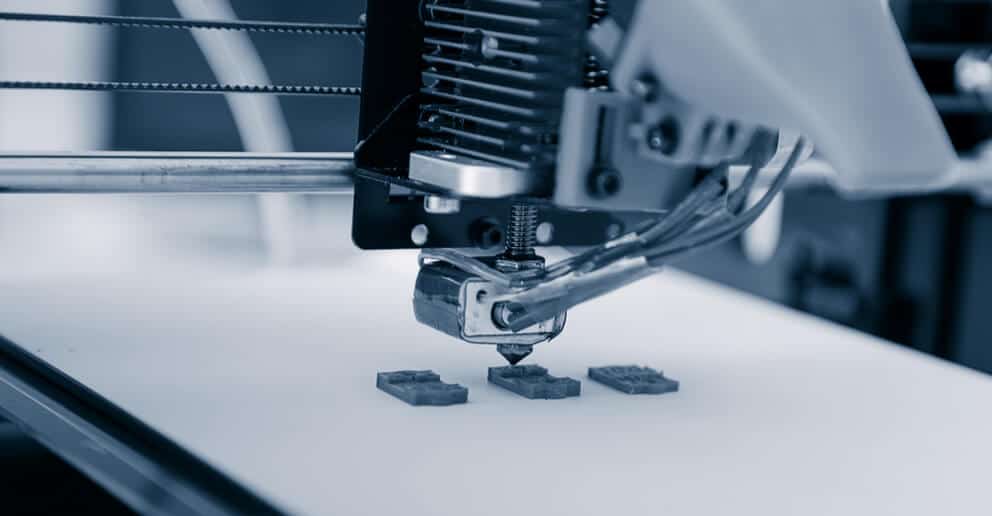The COVID-19 pandemic has exposed weaknesses in the global supply chain, and 3D printing is helping to fix the problem – transforming manufacturing in the process.
Supply chain disruptions were up 67 percent year-over-year in 2020, with those caused by the pandemic accounting for the most damage, according to an annual report from supply chain risk monitor Resilinc. A year and a half into this unprecedented period and we’re reaching an inflection point that’s reverberating across the world in the form of supply shortages and delays for key components. Companies’ earnings are being hit by supply chain delays.
So many businesses have found themselves uncomfortably exposed to supply chain risks outside of their control, which has delayed the release of products and led to soaring prices weighing heavily on their bottom lines. The pandemic has driven home the need for manufacturing solutions that can be more easily managed and scaled internally.
As metal 3D printing has gotten more ubiquitous and affordable, with companies capable of printing everything from medical tools to auto parts, there’s opportunity for businesses to lessen their reliance on the fragile global supply chain. By manufacturing components closer to home through additive manufacturing, companies can shift to a more localized, on-demand method of manufacturing. They can save time, money and return jobs from offshore sites.
Companies like 3DEO, a leader in mass production of metal 3D printed parts, introduced the Manufacturing Cloud and additive printing technologies enable OEMs to keep closer tabs on their production lines so that they can respond in real-time to fluctuations in demand, thereby circumventing the external risks affecting supply chains. By tweaking product development through an integrated platform, companies are able to quickly shift logistics to better address the rapidly evolving situation on the ground. This is particularly important when dealing with a product that has a lot of different metal components, which are oftentimes sourced from around the world.
Some companies in 2020 and 2021 found themselves having to delay entire product launches and shipments because of a single component caught in the clog of the supply chain.
3D printing technologies offered a way out, so they could get back to business faster with competitive pricing that differentiated them from the competition. 3DEO has scaled metal 3D printing to unprecedented levels, and even competes with traditional manufacturing like CNC machining and metal injection molding, even in high production volumes. The company shipped its millionth production part in July, saving many of its customers from these supply chain woes.
Companies that have started to make the shift to additive manufacturing in recent years are reporting huge time and money savings. Ford began testing large-scale 3D printing of certain car parts in 2017 and says rapid manufacturing has changed the way its engineers develop and test cars by reducing the burden of sourcing required components. What once took four months and $500,000 to produce and source a prototype, now takes just four days a few thousand dollars through 3D printing. “You can come up with a really optimized part at the end of the day,” says Paul Susalla, section supervisor of Rapid Manufacturing at Ford. “That’s all because of the speed with which we can produce the prototype parts without tooling.” These aren’t just irrelevant car parts, either; they’re quality. Some of Ford’s 3D-printed components have garnered hundreds of thousands of miles and crash-tested at 70 mph, which the automaker says has resulted in higher-quality vehicles at a more affordable price point.
Being able to produce components at home helps shift to a more on-demand mindset, which is crucial when responding to day-to-day fluctuations in needs.
It also helps a company save money, both through reduced time requirements and costs for shipping and storage of spare and rare parts. Shifting from mass production in cheap, foreign places to local on-demand assembly hubs fueled by new metal 3D printing technologies, manufacturers can produce only what they need. Data from DHL shows that hundreds of millions of spare parts for products as diverse as cars to watches and x-ray machines are stuck in storage at any given time across the world. Some of these are rarely used and may never be needed, which is a costly burden that builds inefficiency into a company’s supply chain. Case studies estimate that the actual share of excess inventories can sometimes exceed 20%, with inventory supplied and stored with no guarantee it will ever move off the shelf. Additive manufacturing can help eliminate that risk by shifting to an as-needed production model, so that they’re only produced upon proof of demand.
The future of manufacturing is on-demand and real-time. For example, 3DEO’s Manufacturing Cloud allows real-time scaling to meet evolving needs. Companies can quickly scale up or wind down in real-time depending on normal fluctuations because they maintain total control of the additive manufacturing process, enabling them to adapt more efficiently thereby increasing competitive advantages with time and cost. Mass disruptions in the supply chain, such as those caused from the COVID-19 pandemic, directly correlate with price increases. Companies that bring component manufacturing in-house through 3D printing are able to produce items faster and more affordably, reducing those risks and undercutting competitors still handcuffed to traditional manufacturing. An MIT analysis suggests that 3D printing could reduce total supply chain costs by 50-90% as production moves from make-to-stock offshore facilities that require a heavy reliance on freight to make-on-demand facilities located closer to the final customer.
Additive manufacturing solutions represent a new kind of industrial revolution at a time when the supply chain’s weaknesses are directly imposing on company operations. Vast savings in the form of time and money are rewarded to those willing to shift to a 3D printing methodology. New efficiencies in the supply chain can be unlocked, minimizing risk factors like COVID-19.
Read the article on Global Trade Magazine here.


